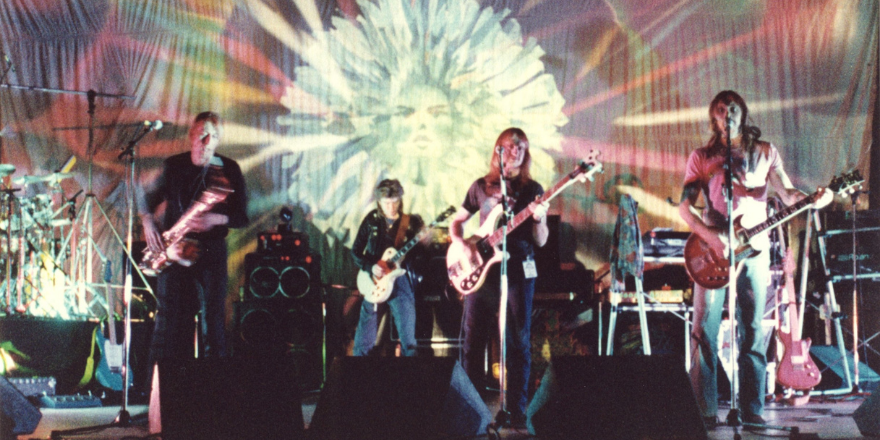
“In the tenth second of forever, I thought of the sea and a white yacht drifting” ... I clearly remember the first time I heard Robert Calvert intone these words against a wash of unearthly electronics. I was 13 and, having been astounded by the single Silver Machine the previous year, had just acquired my first Hawkwind album - a pre-recorded cassette (ask your grandparents) of The Space Ritual. It is still frequently acknowledged as one of the best live rock albums ever released. I of course loved the relentlessly pounding rhythms and sci-fi lyrics, but what really captured my imagination were the poems and spoken passages, written by Calvert and ground-breaking novelist Michael Moorcock, set against bleeps and pulses that sounded like communications from another dimension.
I was already, courtesy of an inspirational grandfather and the Dragonsteeth poetry anthology from school, making my own first stumbling forays into writing, but this showed me how it could fit into the world of rock music, with which I had already developed an unhealthy obsession. It’s worth mentioning that that both the album cover and the Top of the Pops performance of the aforementioned single were impossibly cool, rebellious, and more than a little unhinged. I was hooked.
The newly published Hawkwind: A Visual Biography by Martin Popoff (Wymer) does what it says on the cover, tracing the band's history in photographs from 1969 to their pre-lockdown 50th anniversary tour. What my 13-year-old self would not have imagined, even if I had been able to comprehend the idea of 50 years, was that the largest photographic contribution – well over 200 pictures from the early 1980s to 2019 – would be from my camera.
Long before I entered university as a mature student I trained as a photographer with a particular interest in performance, and the sensory assault of a Hawkwind gig still can’t be beaten as a subject. While the worlds of countercultural space rock and that of prose poetry, poetics and pedagogy, with which I am most associated in the academic sphere, may seem unlikely companions, so much of what I do now can be traced with hindsight to that that first encounter with haunting spoken word. The striking imagistic precision of Calvert’s language led me to Ezra Pound and thence English language iterations of Japanese poetic forms, while Moorcock’s generic mashup monologues drew me to the liminal spaces in which distinctions between prose and poetry shimmer and become uncertain – long before I ever heard the term prose poetry.
Those strange settings have left their mark. In October, Recent Work Press (Canberra) published Five Ages, in which five poets – Cassandra Atherton, Paul Hetherington, Paul Munden, Jen Webb and myself – each wrote a sequence of poems in response to one of Hesiod’s Five Ages of Man. My Silver Age sequence could not help but nod in its introduction to Hawkwind’s Silver Machine, and I took the opportunity of presenting it in public for the first time at York’s Piccadilly Pop-Up Gallery, accompanied by looping electronics and echoing guitar.
Looking forward, I have both a new collection of prose poetry and a co-edited academic book on prose poetry due for publication in May. Looking back, though, I think that Hawkwind: A Visual Biography offers as good a map as any of the path that led me here.
Professor Oz Hardwick is Professor of Creative Writing at Leeds Trinity University. Oz’s poetry has been published extensively worldwide, most recently in the Divining Dante anthology. A recording of his poem My Magical Career has recently been selected for inclusion as one of The Poetry Archive’s representative poems of 2021.